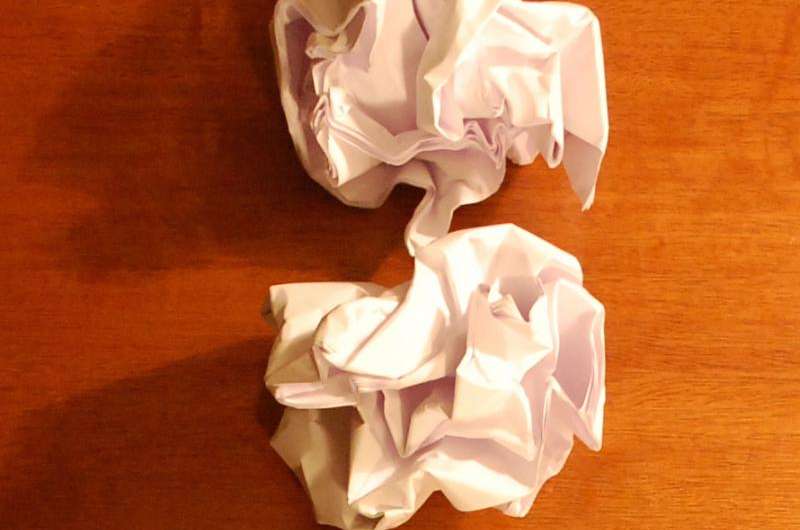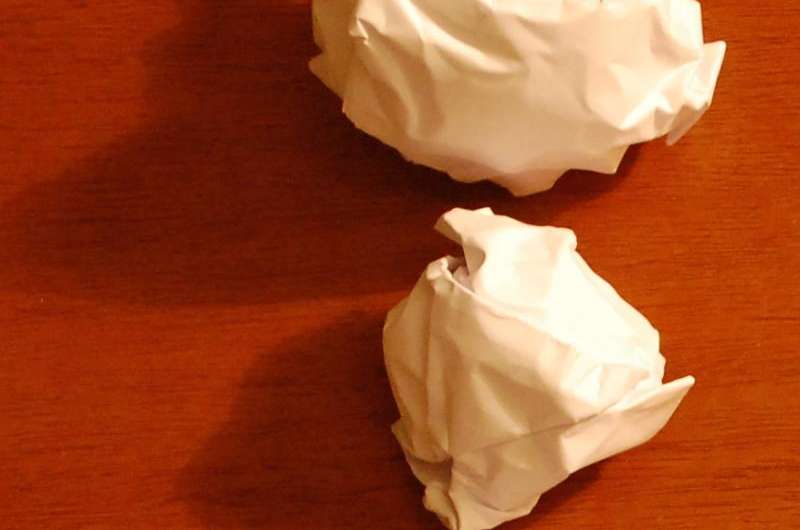July 3, 2015 report
Brain folding related to surface area and thickness, not number of neurons

(Medical Xpress)—A pair of researchers with Universidade Federal do Rio de Janeiro has found that the degree of folding of mammalian brains follows a simple mathematical relationship. In their paper published in the journal Science, Bruno Mota and Suzana Herculano-Houzel describe how they came up with the math and its implications regarding the developmental and evolutionary origins of brain folding. George Striedter and Shyam Srinivasan with the University of California offer a Commentary piece on the work done by the duo in the same journal issue.
Everyone knows that the human brain has folds on its outer surface, as do most other mammalian brains. But what is still a mystery is the exact process that leads to the growth of the folds and why they end up the way they do. In this new effort, the researchers do not answer those questions, but they have solved another mystery—the relationship between brain structure and the degree of folding that occurs between species.
Some animals have more brain folding than others, and while at first blush it might appear that bigger or smarter animals (who generally have more neurons) have more folds, prior attempts to show that such a relationship always holds, however, have not held up. Now Mota and Herculano-Houzel have come up with a mathematical relationship that describes brain folds for all species—and it is nearly the same as that used to describe wadded up paper balls. They found that the cortical surface area (the exposed part) of a brain is proportional to the whole surface area, multiplied by the square root of cortical thickness, i.e., the amount of folding goes up as surface area goes up, but is also impacted by cortical thickness. Taking a step back and looking at the idea, shows that it follows logic: for a brain to maximize surface area inside of a cranium, it has to have folds, but it can only fold so much, depending on cortical thickness—just as occurs with a piece of wadded up paper, the researchers note.

To see if their idea held up in the real world, they tested the math on 62 different species and found that it held up just fine—thus unless an example is found proving otherwise, the two researchers can be credited with finally coming up with an equation to describe why mammalian brains look the way they do compared to one another.
More information: Cortical folding scales universally with surface area and thickness, not number of neurons, Science 3 July 2015: Vol. 349 no. 6243 pp. 74-77 DOI: 10.1126/science.aaa9101
ABSTRACT
Larger brains tend to have more folded cortices, but what makes the cortex fold has remained unknown. We show that the degree of cortical folding scales uniformly across lissencephalic and gyrencephalic species, across individuals, and within individual cortices as a function of the product of cortical surface area and the square root of cortical thickness. This relation is derived from the minimization of the effective free energy associated with cortical shape according to a simple physical model, based on known mechanisms of axonal elongation. This model also explains the scaling of the folding index of crumpled paper balls. We discuss the implications of this finding for the evolutionary and developmental origin of folding, including the newfound continuum between lissencephaly and gyrencephaly, and for pathologies such as human lissencephaly.
© 2015 Medical Xpress



















